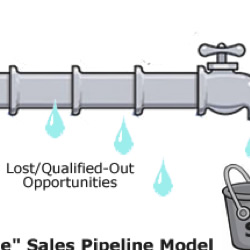More Clients Memorandum
How to write engaging emails
Posted on May 1st, 2011.Last time we talked about what to include in a “nurture sequence” of emails designed to build credibility and trust with a potential client and so to eventually win their business.
I finished off the email by saying “Next you have to write it in an entertaining and engaging way”.
At that point you probably thought “hah – easier said than done”. And you'd be right.
But it's crucial to be able to do this. If people don't read your emails it doesn't matter what you put in them – it won't do a jot for your credibility, or build an iota of trust.
Ideally, you want people to look forward to receiving your emails and to open them straight away.
One reason they'll do this is if your emails contain a lot of useful information. Your knowledge of your clients' main problems, challenges, goals and aspirations tells you the topics you should be writing about.
But your emails also need to be entertaining too. We get so many emails these days, it's the entertaining and interesting ones that stand out.
Becoming an entertaining writer is a tough task. Nowadays I get many compliments on my writing (though I know there's still a lot of room for improvement).
But it wasn't always this way.
When I first started writing it was very stiff and formal. It was a bit like I was lecturing my readers.
And, to be frank, talking down to people is hardly a good way of endearing yourself to them.
So early on I learnt to write more casually. In particular, to write like I speak.
Imagine you're talking to a close business friend. What kind of language and speech pattern would you use with him or her? That's the kind of language you should be using when writing to potential clients.
That means using short paragraphs and sentences and simple words. And using the appropriate short forms: “I'll” rather than “I will”, “isn't” rather than “is not”.
I also learnt that using stories works much better than using facts and figures.
Personally, I'm a facts and figures guy. Probably because my first degree was in Maths.
But most people aren't. Most people enjoy and are persuaded much more by an interesting story or anecdote. It really brings your point home.
One of the first emails you probably got from me was “Hope is not a Strategy” where I illustrate how you need to take an active approach to your marketing by telling the story of what happened to me when I first set up my business.
I get a lot of people replying to that email telling me how it really hit a nerve and resonated with them.
I think the reason is that I tell my story. I don't just say what they should or shouldn't do – I say what happened to me and what worked for me.
Finally, write often and read often. I try to blog at least once a month and have been doing so for over a decade. Often much more frequently.
If you go back to my early blog posts you'll see how my writing has changed over the years.
I've gained the confidence to try out new things and “be myself” in my writing, rather than who I think I should be.
And by reading well-written blogs – particularly those with a very different style to yours – you come to appreciate what works and what doesn't.
In the next email I'm going to share a personal story that will help you see how to write in ways that will connect much better with your audience.
 I've written a few times about just how important having valuable content on your website is to your success at
I've written a few times about just how important having valuable content on your website is to your success at  I read a thought-provoking blog post by Dan Waldschmidt today entitled
I read a thought-provoking blog post by Dan Waldschmidt today entitled  In the world of espionage they call it your “legend”. In drama, it's a character's “backstory”. In marketing we often call it a “persona”.
In the world of espionage they call it your “legend”. In drama, it's a character's “backstory”. In marketing we often call it a “persona”.
 John Seddon is a global authority on systems thinking in service organisations.
John Seddon is a global authority on systems thinking in service organisations.